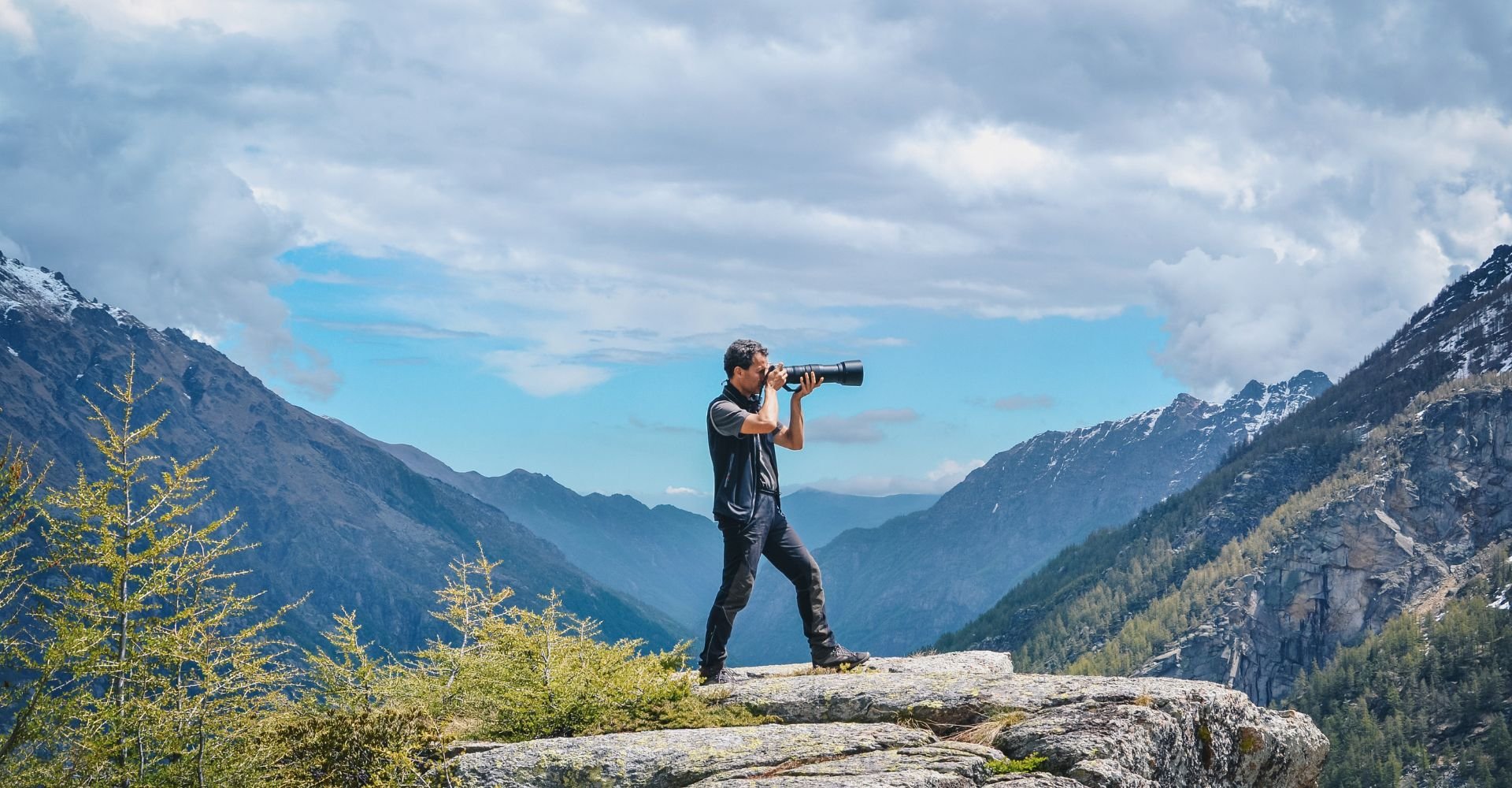What's the Best Lens for Landscape Photography?
From the vastness of a mountain range, to the intricate details of a hidden waterfall and the fiery hues of a sunrise over a canyon, landscape photography captures the majestic beauty of our world. Snapping these breathtaking scenes requires the right tools, and the lens you choose plays a crucial role. Landscape photography commonly usually uses both wide angle and telephoto lenses. Want to learn more? Keep reading.
Finding the Perfect View: The Best Lens for Landscape Photography
A good lens or two are the most important pieces of equipment you’ll own as a landscape photographer and arguably matter more than your camera. Every lens has its own way of “seeing” the world, so different lenses will change the way you compose your photographs and tell your story. Unfortunately there's no one-size-fits-all answer, and the most ideal lens for you will depend on different factors, including:
Your camera sensor size: Full-frame cameras require wider focal lengths than APS-C crop sensor cameras to achieve the same angle of view.
Your shooting style: Do you prefer capturing expansive vistas or focusing on intimate details?
Your budget: High-quality lenses with wider apertures and better image stabilization tend to be more expensive.
When you decide to photograph a landscape, the first step is to visualize the final image. Which elements of the frame do you want to emphasize, and how do you plan to do so? Wide angle lenses let you emphasize different elements compared to telephotos, and other aspects of a lens like its aperture and sharpness also impact the photos you take. Here's a breakdown of popular focal lengths for landscape photography.
Wide-angle (16mm-24mm): ideal for capturing grand landscapes, emphasizing foreground elements and astrophotography.
Standard (24mm-70mm): a versatile option for various landscapes, and good for travel photography.
Telephoto (70mm-200mm): great for compressing backgrounds, isolating details and capturing distant subjects.
Prime lenses: offer superior image quality and wider apertures for low-light and shallow depth of field.
The best lenses are going to be the ones that match your vision and budget. Consider renting different lenses or borrowing ones from a friend to test out before committing to a purchase. You might be pleasantly surprised by a new lens or realize your old kit works perfectly. Either way, you’ll learn what equipment makes sense for you, and that translates to improving your overall landscape photography. Experiment, explore and have fun capturing the beauty of the world around you.
Wide Angle and Telephoto Lenses for Landscape Photography
Lenses influence the creative side of photography more than any other piece of equipment. Two of the most common used in landscape photography are wide angle and telephoto lenses. For expansive landscapes where you want to capture as much as possible, wide-angle lenses offer a broad field of view, resulting in spectacular panoramic views that convey a sense of grandeur and space. At the other end of the spectrum are telephoto lenses, perfect for isolating specific elements within a larger landscape and making the subject stand out by creating a blur in the background.
Wide angle lenses are about the power of perspective and allow you to incorporate a vast amount of the landscape into a scene. Our eyes see approximately 35-50mm field of view in real life so shooting wider than that gives a sense of how huge a landscape is, where we would physically have to turn our head from side to side to take in.
Embrace the Expanse: wide angles excel at capturing vast landscapes like sweeping coastlines, towering mountains or sprawling fields. Use them to convey the immense scale and grandeur of your subject.
Foreground Focus: include a strong foreground element like rocks or flowers to create depth and draw the viewer further into the scene.
Play with Distortion: explore slight distortion around the edges, especially near the corners, it can add dynamism and emphasize the leading lines in your composition. Tilt the lens slightly for intentional distortion or use unconventional framing for abstract interpretations.
Sharpness is Key: use a low aperture (F4 or F2.8) for maximum sharpness across the frame, especially when focusing on infinity.
The beauty of a telephoto lens is that you can bring far away scenes seemingly closer to you, which is great when you’re shooting mountain peaks that are far away for example. You have the ability to zoom in almost to the very end of the focal range and still capture a sharp image. Telephotos unlock a world of detail, allowing you to pick the best parts of the landscape, emphasizing smaller areas that would be missed using a wide angle lens with a wider field of view. By magnifying an element it brings it to the forefront of your composition, so you can be creative with a subject that is distant.
Isolate Beauty: zoom in on captivating details like rock formations, textured bark, or delicate wildflowers. Telephotos compress the background, making it appear closer and emphasizing the subject's presence.
Create Drama: draw the viewer's eye directly to the focal point by eliminating distracting elements in the periphery which creates a sense of intimacy and drama, perfect for capturing sunrises, waterfalls, or lone trees silhouetted against the sky.
Aperture and Depth of Field: use a moderate aperture to balance sharpness and background blur; for isolating your subject further, try a wider aperture, but be mindful of the shallower depth of field.
With a little practice, you'll be capturing stunning landscape images in no time! Want to maximize your time? Our guidebooks offer invaluable resources, including photography tips, ideal times and spots, as well as location-specific insights, all aimed at ensuring you make the most of your trip. Happy shooting!

